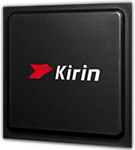
AMD A4-4000 Benchmark, Test and specs
Last updated:
The AMD A4-4000 has 2 cores with 2 threads and is based on the 2. gen of the AMD A series. The processor uses a mainboard with the FM2 socket and was released in Q2/2013. The AMD A4-4000 scores 348 points in the Geekbench 5 single-core benchmark. In the Geekbench 5 multi-core benchmark, the result is 499 points.
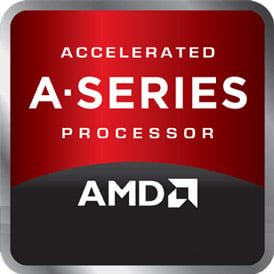
| Name: | AMD A4-4000 |
|---|---|
| Family: | AMD A (112) |
| CPU group: | AMD A4-4000 (2) |
| Architecture: | Richland (Piledriver) |
| Segment: | Desktop / Server |
| Generation: | 2 |
| Predecessor: | -- |
| Successor: | -- |
CPU Cores and Base Frequency
The AMD A4-4000 has 2 CPU cores and can calculate 2 threads in parallel. The clock frequency of the AMD A4-4000 is 3.00 GHz (3.20 GHz). The number of CPU cores greatly affects the speed of the processor and is an important performance indicator.
| CPU Cores / Threads: | 2 / 2 |
|---|---|
| Core architecture: | normal |
| Cores: | 2x |
| Hyperthreading / SMT: | No |
|---|---|
| Overclocking: | No |
| Frequency: | 3.00 GHz |
| Turbo Frequency (1 Core): | 3.20 GHz |
| Turbo Frequency (2 Cores): | 3.20 GHz |
Internal Graphics
The AMD A4-4000 has integrated graphics, called iGPU for short. Specifically, the AMD A4-4000 uses the AMD Radeon HD 7480D, which has 128 texture shaders and 2 execution units. The iGPU uses the system's main memory as graphics memory and sits on the processor's die.
| GPU name: | AMD Radeon HD 7480D |
|---|---|
| GPU frequency: | 0.72 GHz |
| GPU (Turbo): | No turbo |
| Compute units: | 2 |
| Shader: | 128 |
| Hardware Raytracing: | No |
| Release date: | Q2/2012 |
| Max. displays: | 2 |
|---|---|
| Generation: | 4 |
| Direct X: | 11 |
| Technology: | 32 nm |
| Max. GPU Memory: | 2 GB |
| Frame Generation: | No |
Hardware codec support
A photo or video codec that is accelerated in hardware can greatly accelerate the working speed of a processor and extend the battery life of notebooks or smartphones when playing videos.
| h265 / HEVC (8 bit): | No |
|---|---|
| h265 / HEVC (10 bit): | No |
| h264: | Decode |
| VP8: | No |
| VP9: | No |
| AV1: | No |
|---|---|
| AVC: | Decode |
| VC-1: | Decode |
| JPEG: | Decode / Encode |
Memory & PCIeThe processor can use up to memory in 2 (Dual Channel) memory channels. The maximum memory bandwidth is 21.3 GB/s. The memory type as well as the amount of memory can greatly affect the speed of the system. |
|
| Memory type: | Memory bandwidth: |
|---|---|
| DDR3-1333 | 21.3 GB/s |
| Max. Memory: | |
| Memory channels: | 2 (Dual Channel) |
| ECC: | No |
| PCIe: | |
| PCIe Bandwidth: | -- |
Thermal ManagementThe thermal design power (TDP for short) of the processor is 65 W. The TDP specifies the necessary cooling solution that is required to cool the processor sufficiently. The TDP usually gives a rough idea of the actual power consumption of the CPU. |
|
|---|---|
| TDP (PL1 / PBP): | 65 W |
| TDP (PL2): | -- |
| TDP up: | -- |
| TDP down: | -- |
| Tjunction max.: | -- |
Technical details
The AMD A4-4000 is made in 32 nm. The smaller the manufacturing process of a CPU, the more modern and energy-efficient it is. Overall, the processor has 1.00 MB cache. A large cache can greatly speed up the processor's speed in some cases such as games.
| Technology: | 32 nm |
|---|---|
| Chip design: | |
| Socket: | FM2 |
| L2-Cache: | -- |
| L3-Cache: | 1.00 MB |
| AES-NI: | Yes |
| Operating systems: | Windows 10, Linux |
| Virtualization: | AMD-V |
|---|---|
| Instruction set (ISA): | x86-64 (64 bit) |
| ISA extensions: | SSE4a, SSE4.1, SSE4.2, AVX, FMA3, FMA4 |
| Release date: | Q2/2013 |
| Release price: | 32 $ |
| Part Number: | -- |
| Documents: | -- |
Rate this processor
Benchmark results

The benchmark results for the AMD A4-4000 have been carefully checked by us. We only publish benchmark results that have been created by us or that have been submitted by a visitor and then checked by a team member. All results are based on and fullfill our benchmark guidelines.
Geekbench 5, 64bit (Single-Core)
Geekbench 5 is a cross plattform benchmark that heavily uses the systems memory. A fast memory will push the result a lot. The single-core test only uses one CPU core, the amount of cores or hyperthreading ability doesn't count.
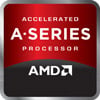
|
AMD A4-3400
2C 2T @ 2.70 GHz |
||
|
|
HiSilicon Kirin 970
8C 8T @ 2.40 GHz |
||
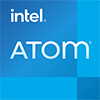
|
Intel Atom C3758
8C 8T @ 2.20 GHz |
||
|
|
AMD A4-4000
2C 2T @ 3.20 GHz |
||
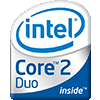
|
Intel Core2 Duo E4700
2C 2T @ 2.60 GHz |
||
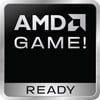
|
AMD Phenom II X4 805
4C 4T @ 2.50 GHz |
||

|
AMD A4-3420
2C 2T @ 2.80 GHz |
||
Geekbench 5, 64bit (Multi-Core)
Geekbench 5 is a cross plattform benchmark that heavily uses the systems memory. A fast memory will push the result a lot. The multi-core test involves all CPU cores and taks a big advantage of hyperthreading.

|
AMD E2-6110
4C 4T @ 1.50 GHz |
||

|
Qualcomm Snapdragon 800
4C 4T @ 2.45 GHz |
||

|
Qualcomm Snapdragon 801
4C 4T @ 2.45 GHz |
||
|
|
AMD A4-4000
2C 2T @ 3.20 GHz |
||

|
AMD A4-3330MX
2C 2T @ 2.60 GHz |
||

|
AMD A4-4300M
2C 2T @ 3.00 GHz |
||

|
Intel Celeron 2961Y
2C 2T @ 1.10 GHz |
||
iGPU - FP32 Performance (Single-precision GFLOPS)
The theoretical computing performance of the internal graphics unit of the processor with simple accuracy (32 bit) in GFLOPS. GFLOPS indicates how many billion floating point operations the iGPU can perform per second.
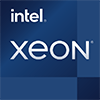
|
Intel Xeon E3-1265L v3
Intel HD Graphics (Haswell GT1) @ 1.20 GHz |
||

|
Intel Atom x7-E3950
Intel HD Graphics 505 @ 0.65 GHz |
||

|
Qualcomm Snapdragon 636
Qualcomm Adreno 509 @ 0.72 GHz |
||
|
|
AMD A4-4000
AMD Radeon HD 7480D @ 0.72 GHz |
||
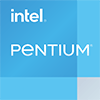
|
Intel Pentium G3258
Intel HD Graphics (Haswell GT1) @ 1.15 GHz |
||

|
AMD A4-4020
AMD Radeon HD 7480D @ 0.72 GHz |
||

|
Intel Pentium G3440
Intel HD Graphics (Haswell GT1) @ 1.15 GHz |
||
Estimated results for PassMark CPU Mark
Some of the CPUs listed below have been benchmarked by CPU-monkey. However the majority of CPUs have not been tested and the results have been estimated by a CPU-monkey’s secret proprietary formula. As such they do not accurately reflect the actual Passmark CPU mark values and are not endorsed by PassMark Software Pty Ltd.

|
Intel Core i3-4100E
2C 4T @ 2.40 GHz |
||

|
Intel Atom x6211E
2C 2T @ 2.20 GHz |
||

|
Intel Pentium G3450T
2C 2T @ 2.90 GHz |
||
|
|
AMD A4-4000
2C 2T @ 3.20 GHz |
||

|
AMD Athlon II X3 450
3C 3T @ 3.20 GHz |
||
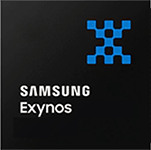
|
Samsung Exynos 7904
8C 8T @ 1.80 GHz |
||
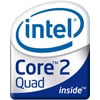
|
Intel Core 2 Quad Q8300
4C 4T @ 2.50 GHz |
||
CPU-Z Benchmark 17 (Multi-Core)
The CPU-Z benchmark measures a processor's performance by measuring the time it takes the system to complete all benchmark calculations. The faster the benchmark is completed, the higher the score.

|
Intel Core2 Duo T5750
2C 2T @ 2.00 GHz |
||

|
AMD A9-9425
2C 2T @ 3.10 GHz |
||

|
Intel Core2 Duo E6300
2C 2T @ 1.86 GHz |
||
|
|
AMD A4-4000
2C 2T @ 3.00 GHz |
||

|
Intel Pentium T2390
2C 2T @ 1.86 GHz |
||

|
AMD Athlon II X2 260
2C 2T @ 3.20 GHz |
||

|
AMD Phenom II X2 555
2C 2T @ 3.20 GHz |
||
Cinebench R15 (Single-Core)
Cinebench R15 is the successor of Cinebench 11.5 and is also based on the Cinema 4 Suite. Cinema 4 is a worldwide used software to create 3D forms. The single-core test only uses one CPU core, the amount of cores or hyperthreading ability doesn't count.
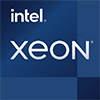
|
Intel Xeon E5-2603 v4
6C 6T @ 1.70 GHz |
||

|
Intel Xeon E5-2609 v4
8C 8T @ 1.70 GHz |
||

|
Intel Celeron N4000
2C 2T @ 2.60 GHz |
||
|
|
AMD A4-4000
2C 2T @ 3.20 GHz |
||

|
AMD A6-9220
2C 2T @ 2.90 GHz |
||

|
Intel Celeron 3215U
2C 2T @ 1.70 GHz |
||

|
Intel Celeron 3755U
2C 2T @ 1.70 GHz |
||
Cinebench R15 (Multi-Core)
Cinebench R15 is the successor of Cinebench 11.5 and is also based on the Cinema 4 Suite. Cinema 4 is a worldwide used software to create 3D forms. The multi-core test involves all CPU cores and taks a big advantage of hyperthreading.

|
Intel Celeron J1850
4C 4T @ 2.00 GHz |
||

|
AMD A4-5000
4C 4T @ 1.50 GHz |
||

|
Intel Celeron 3205U
2C 2T @ 1.50 GHz |
||
|
|
AMD A4-4000
2C 2T @ 3.20 GHz |
||

|
Intel Atom x5-Z8350
4C 4T @ 1.92 GHz |
||

|
Intel Pentium 2117U
2C 2T @ 1.80 GHz |
||

|
Intel Core i3-4010Y
2C 4T @ 1.30 GHz |
||
Benchmarks

Geekbench 5 (SC)
2,488 entries
2,488 entries

Geekbench 5 (MC)
2,461 entries
2,461 entries

FP32 SP (iGPU)
2,026 entries
2,026 entries
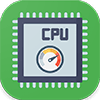
PassMark CPU-Mark
2,391 entries
2,391 entries
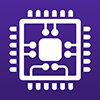
CPU-Z Benchmark 17 (MC)
733 entries
733 entries

Cinebench R15 (SC)
1,106 entries
1,106 entries

Cinebench R15 (MC)
1,101 entries
1,101 entries

Geekbench 3 (SC)
942 entries
942 entries

Geekbench 3 (MC)
938 entries
938 entries

Cinebench R11.5 (SC)
825 entries
825 entries

Cinebench R11.5 (MC)
836 entries
836 entries
Popular comparisons
back to index



